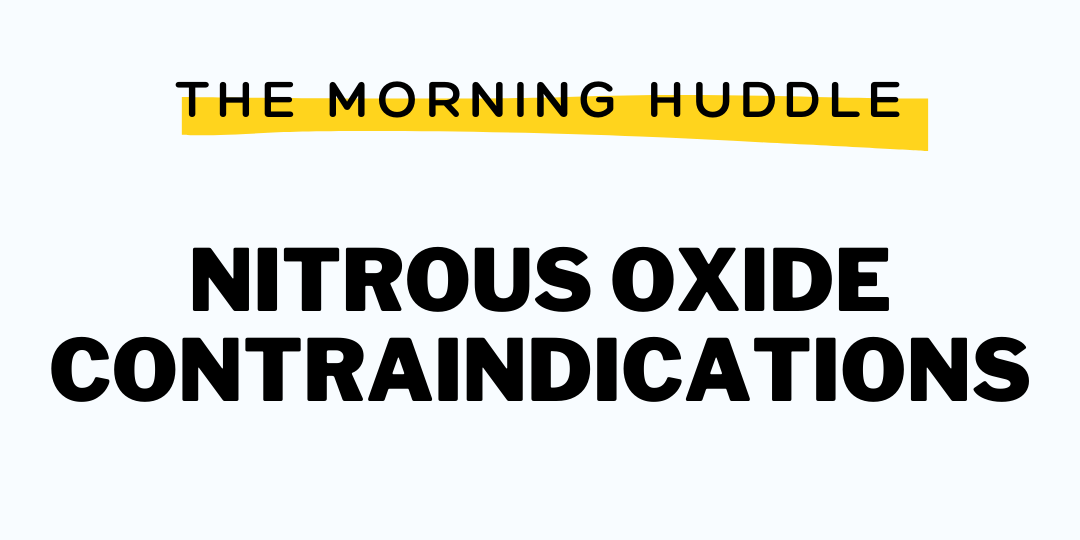Nitrous oxide is seen as the “safest” form of sedation given in the dental setting. Since almost all of the nitrous oxide ingested is expelled unchanged, its delivery has become routine, due to its relative physiological safety. In routine, it is important to review the minutiae – the small details that tend to be forgotten but can have a profound effect on a small subset of our patients. Here we will review the contraindications of nitrous oxide sedation, even the minutiae.
Inability to physically deliver, tolerate and complete dental treatment with nitrous oxide:
- Hood fitting: The nitrous oxide gas hood must be fitted and stable on the patient, where a tight seal is created around the nose. Any obstruction in and around the nostrils (such as piercings) should be assessed. Any obstruction can decrease the amount of nitrous oxide delivered to the patient.
- Claustrophobia: The fitting of the nasal hood has been shown to induce claustrophobia in some patients, especially pediatrics. A history of claustrophobia is therefore a contraindication.
- Ability to complete the procedure safely: First, the patient must be able to sit and handle being in a limited space surrounded by armamentarium. Second, the practitioner should be confident that the procedure could be completed safely with the addition of nitrous oxide equipment in the working space.
Procedural contraindications:
- Nitrous oxide and oxygen aid in combustion. Any procedure involving heat or combustion is contraindicated. This can include cutting zirconia crowns (creating sparks), using electro-cutter or lasers.
Medical Contraindications:
- Chronic obstructive pulmonary disease (COPD): The amount of oxygen that is in nitrous oxide is higher than that of room air. Patients with COPD have their breathing triggered by a decrease in oxygen levels detected in the lungs. Therefore, an increase in oxygen levels can decrease the physiological triggers of respiration.
- Vitamin B12 or folate deficiency: It has been shown that nitrous oxide can decrease the physiological levels of B12 and folate. If a patient already has decreased B12 or folate levels due to conditions such as malnutrition or anemia, nitrous oxide sedation can trigger megaloblastic anemia.
- Pulmonary hypertension: Nitrous oxide, at high concentrations, has a profound effect in constricting vascular smooth muscle within the lungs, thus increasing blood pressure in the pulmonary system. Patients with pre-existing pulmonary hypertension can potentially have decreases in forward blood flow and a significant cardiovascular event.
- Exasperation of already existing air spaces: Previous history of middle-ear blockage/ surgery, pneumothorax, alveolar bullae or bowel obstruction can be progressed – due nitrous oxide’s potential to diffuse in already existing air spaces. This progression can lead to potential blindness, deafness, bowel distention or rupture of bullae.
- Pregnancy: Decreased B12 and folate levels are also seen within pregnancy, which can be further decreased with nitrous oxide sedation. As any elective treatment should be deferred until after pregnancy, so should nitrous oxide sedation.
- Severe coronary artery disease: Nitrous oxide has been seen to decrease the activity of the methionine synthase system. This decrease leads to an increase in methionine. Methionine has been shown to be associated with increased cardiovascular events. Therefore, consultation and medical clearance from the patient’s physician is recommended.


